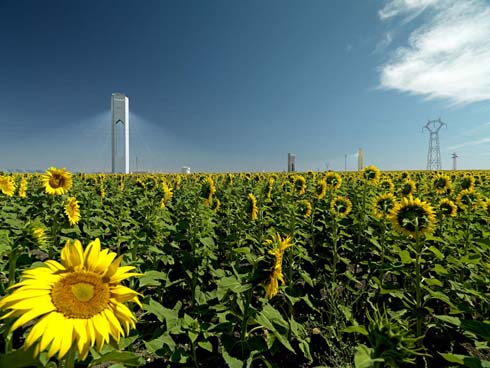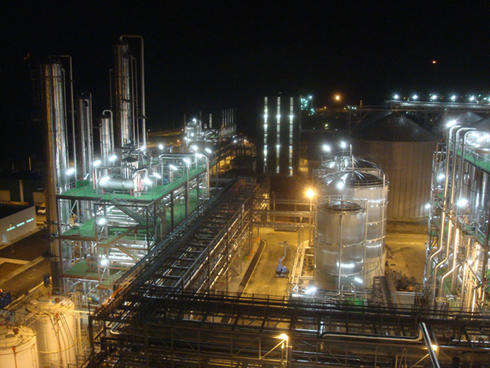 Abengoa
Abengoa
Annual Report 2010
- Corporate Social Responsibility Report
- Committed to Innovation
- R&D Assessment
In 2010, a further step forward was taken in designing a process for R&D assessment that quantifies, in economic terms, Abengoa’s innovation “assets”.
This new process enables traceability of R&D investment from source to implementation in commercial processes, measuring the enhancements afforded by research in terms of the profitability and efficiency of Abengoa processes linked to technological innovation. This R&D activation proves essential in prioritizing functions in the decision-making process involved in the realm of innovation to reflect corporate strategy.

Methodology for R&D+i assessment at Abengoa
Implementation of a common assessment methodology is envisaged as a unifying component of Abengoa’s R&D strategy. The goal proposed consists of putting this procedure into practice in the different business units and subsequent monitoring of the evolution of the different programs.
An appropriate R&D investment monitoring system will ultimately enable better decision-making with a view to the future.

Central Receiver and Tower Technology
Development of central receiver and tower technology constitutes Abengoa’s chief differentiating value with respect to the company’s competitors.
Commitment to power towers and heliostats, with a clear focus on pursuing higher efficiencies, particularly in the solar plant component, is recognized worldwide as a hallmark of Abengoa Solar.

There are currently three steam-equipped power towers in operation. Two of these are commercial towers: PS10, in operation since mid-2007 and capable of generating up to 11 MW; and PS20, which went into operation in mid-2009, generating up to 20 MW. The third plant is Eureka, an R&D+i project in operation since mid-2009.
The aim of the Eureka project is to address the new challenges in tower technology, which, following start-up of PS20, has unquestionably proven its reliability. This second-generation power tower has managed to reach higher temperatures to produce superheated steam, thereby enhancing the global efficiency of the steam cycle. The plant is made up of 35 heliostats and a 50 m tower housing the experimental superheating receiver. Plant power output capacity totals 3 MW thermal.
The results obtained through the Eureka project in 2010 led Abengoa to carry out conceptual, basic and detail engineering to render a 50 MW plant that is significantly more efficient and manageable than the commercial plants currently in operation.
In conjunction with operation and assessment of Eureka and the other commercial plants, software is being developed to simulate solar receiver performance within the framework of the Cenit Consolida project, and research is similarly being conducted on new materials and coatings for superheated saturated steam receivers and new receiver design.
In the tower technology field, R&D pursuits center not only on steam technology; two new projects, initiated in 2009, are focused on two very different fluids: Molten salts and air.
The CRS salt project, co-financed by the Spanish Center for Industrial Technological Development (Centro para el Desarrollo Tecnológico Industrial, or CDTI), involves the engineering and construction of a power tower receiver prototype in which the heat-bearing fluid is a blend of molten salts. The aim is to study the technical and economic viability of a plant employing this technology on a larger scale.
The Solugás project, co-financed by the European Union’s Seventh Framework Programme for research and technological development, which began life in 2008, seeks to demonstrate tower operation at a higher temperature, employing air as the heat-bearing fluid, and a gas cycle instead of a steam cycle.


Bioenergy Sustainability Standard
The Renewable Energy Directive (RED) sets down sustainability guidelines for biofuel production that will be mandatory beginning in December 2010. This framework for sustainability makes it compulsory for economic operators to:
- Ensure that their raw material input production areas are not located in protected areas.
- Report savings in greenhouse gas (GHG) emissions above the predetermined thresholds.
- Facilitate traceability of the information associated with the biofuel from the raw material of origin through a Mass Balance System.
Abengoa wishes to underscore the importance of the initiatives being pursued in recent years in the realm of sustainability, through the development and implementation of a voluntary scheme with which to demonstrate fulfillment of the RED sustainability requirements in the company’s European biofuel production and distribution operations.
The so-called RED Bioenergy Sustainability Assurance Scheme (hereinafter, the RBSA) has therefore become a powerful tool for yielding flexibility in fulfilling RED requirements, as once the directive has been approved by the European Commission (EC), all member states must recognize a biofuel produced in accordance with this standard regardless of how it is worked into domestic law.
The RBSA Standard establishes requirements for compliance with RED specifications throughout the industrial chain, from agricultural production through to the end consumer, within a global geographical sphere.
Among other innovative aspects, the standard includes two specific advancements aimed at facilitating supplier operations through the development of:
- Technological systems for computing GHG emissions, particularly for agricultural operations, based on values averaged geographically.
- Sustainability maps, which enable given regions to qualify as being sustainable under the RED.
The RBSA Standard is currently in the process of being evaluated by the EC, with procedures and key systems set forth under the standard already in place throughout Abengoa Bioenergy’s European companies.

